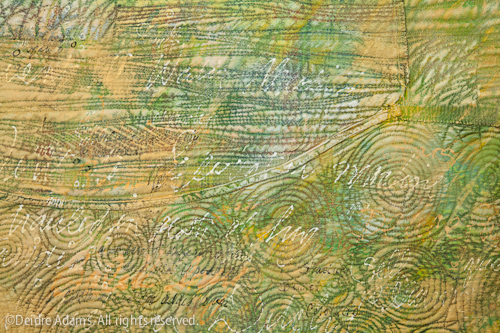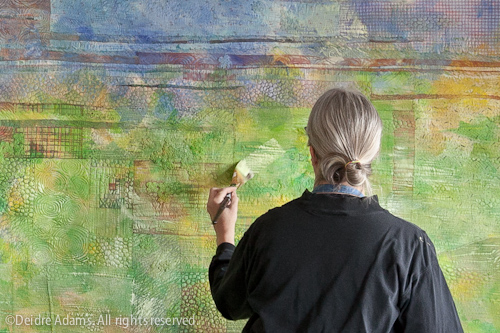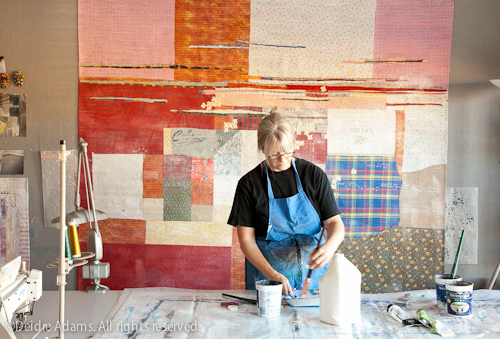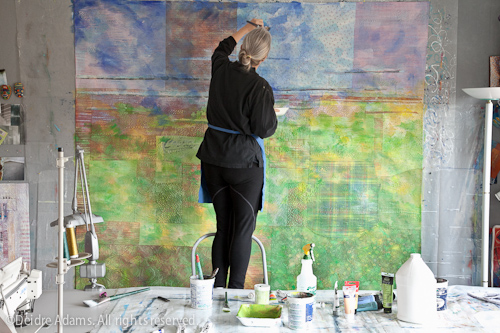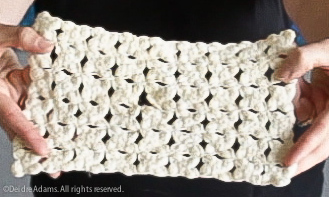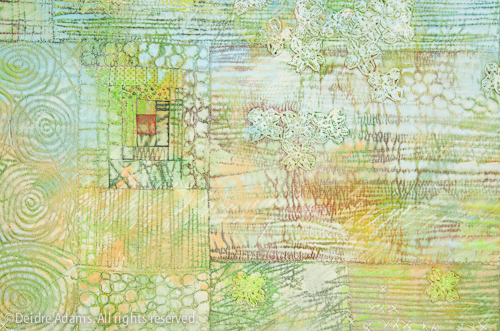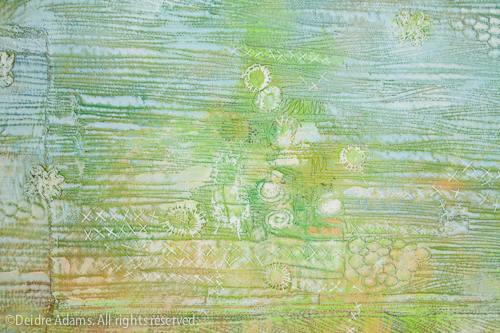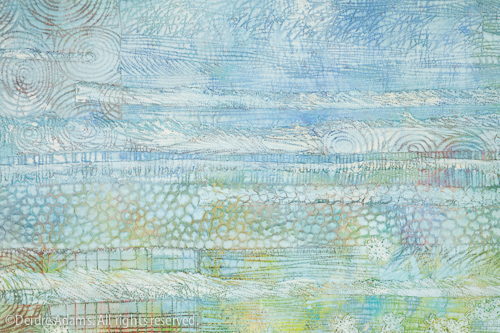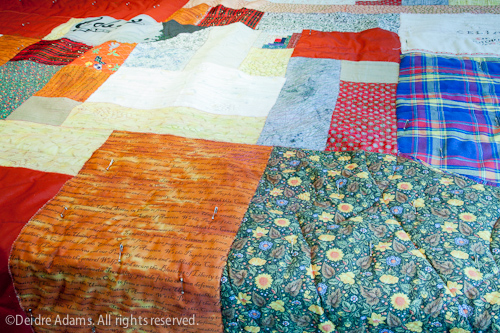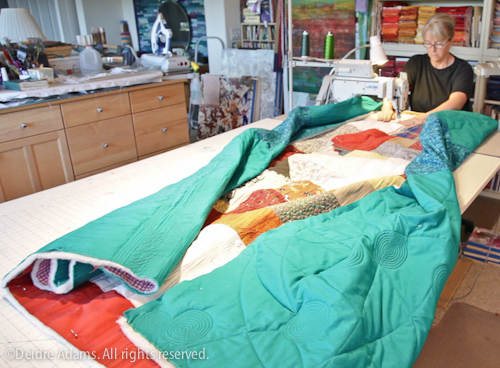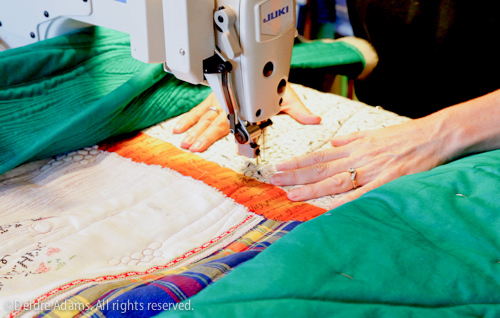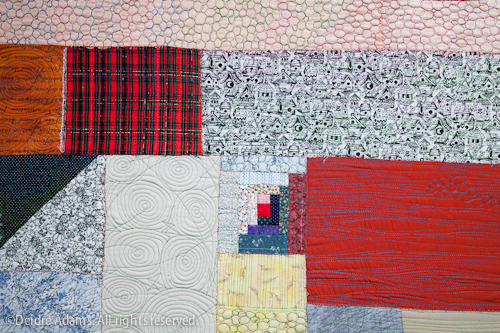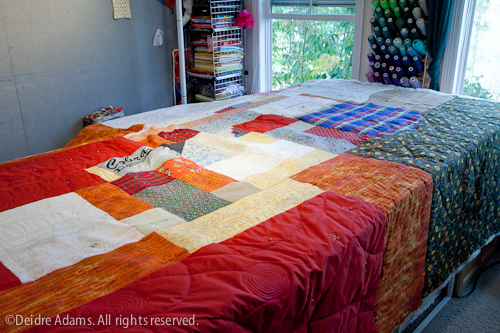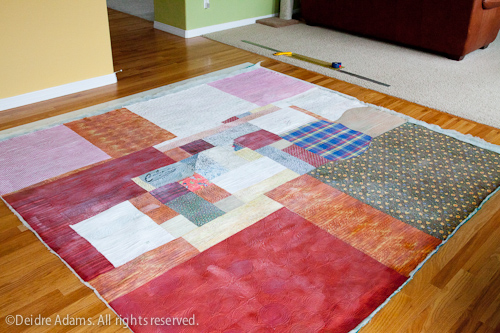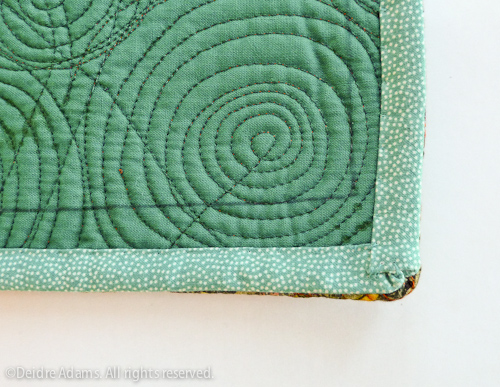Evolution of a commission – part 5
The last step of the painting process is to add small details, fine lines, and handwritten text to provide another layer of visual interest as well as give me a way to incorporate the words of the community members into the work. The writing consists partly of words from notes I took during the interview process. Names of animals, thoughts about the community, friends, schools, daily chores and activities – these are layered into a network of text which isn’t specifically meant to be read, but rather serves to “weave” these experiences into the texture of the work.
One of the interviewees, Charlotte Kerksiek, was a farmer’s daughter who spoke of her experiences growing up on a farm. Her father had come from Germany to live with an uncle in Iowa when he was 15 years old, and later started his own farm with his wife. Charlotte spoke very fondly of her parents, who were “country folk” and “so in touch with the land.” She remembers the lessons they taught: “to work hard, be honest, and pay our bills.” She brought written notes describing her memories:
I can see Dad walking through a cornfield, changing the irrigation water, leaning on a hoe in the garden to view the sunset, then pausing to point out a ‘Sweet William’ flower to me. His name was William. I can see mother hanging out the wash, separating the cream, gathering the eggs, walking down to the barn, hoeing in her garden, baking a cake for the afternoon club meeting, curling my sister’s hair.
On a farm you see and feel life around you and you learn to respect it. You know the real origins of milk, eggs and bread, that they don’t just spring up from the super market.
She also gave me some photocopies of pages from her father’s daily journal and some pages from his financial ledger, with a meticulous listing of receipts and expenses – for groceries, gas, hens, equipment, loan payments, payments to laborers, and various & sundry – including $1 for 2 lbs. Rat Poison, $6.60 to a furniture store for a baby bed, and $1 to a doctor for a baby checkup.
I also have photocopies of two letters he wrote, which allowed me a fascinating window into one man’s experiences as he built a life for himself. From a letter written from Kansas in 1935 (before he started his own farm):
Dear Friend:
Another year has run its course, we are again a year older, but have not much to show in financial gain, only a little knowledge added to our store of thought, but I am ready to admit that I have not gained much, even there. Am afraid that I do too much reading of rubbish and not enough of the kind that would improve one’s mind.
I am sure at last that farming will be my Life’s Work, although other things may be added, they will only be side lines. Farming will be the Main Feature, and it will be absolutely diversified. Cattle, Hogs, Chickens will the the main stay until I get a stronger hold, then Horses and Sheep may be added. Grains of different sorts and Silos when possible.
I scanned some of the text from the journal pages and made Thermofax screens for printing onto the painted piece. Because of the very rough surface, though, this didn’t work as well as I had hoped, so I switched to writing directly onto the piece itself, copying words from the journals and from my notes. I use a small squeeze bottle with a metal tip to do tiny details and writing.



